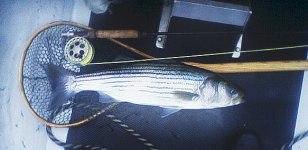JeffK wrote:
I have heard there is some dispute over whether or not walleye were introduced or native to the Suskie. (no dispute over smallies - introduced from the Potomac). Walleyes are native to the Mississippi and Great Lakes drainages, and many of the Great Lakes/Mississippi drainage fish are missing in the Suskie and Delaware watersheds. The debate over whether some of the early mentioned fish are walleyes is complicated by evidence that the Great Lakes drained down the Suskie at one point in the recent glaciation, so the Great Lakes were connected to the Suskie and walleyes could have been introduced then. I think most biologists believe they are introduced, but there is a contrary view.
BTW, as the glaciers moved south they first blocked the St Lawrence so the Great Lakes drained through the Hudson R. When the Hudson was blocked, they drained through the Suskie briefly. The major rivers in the low sea level period carved out large valleys that are now the Hudson Canyon and tidal Hudson and Chesapeake Bay. These are larger than may have been cut by the rivers in their present flow.





